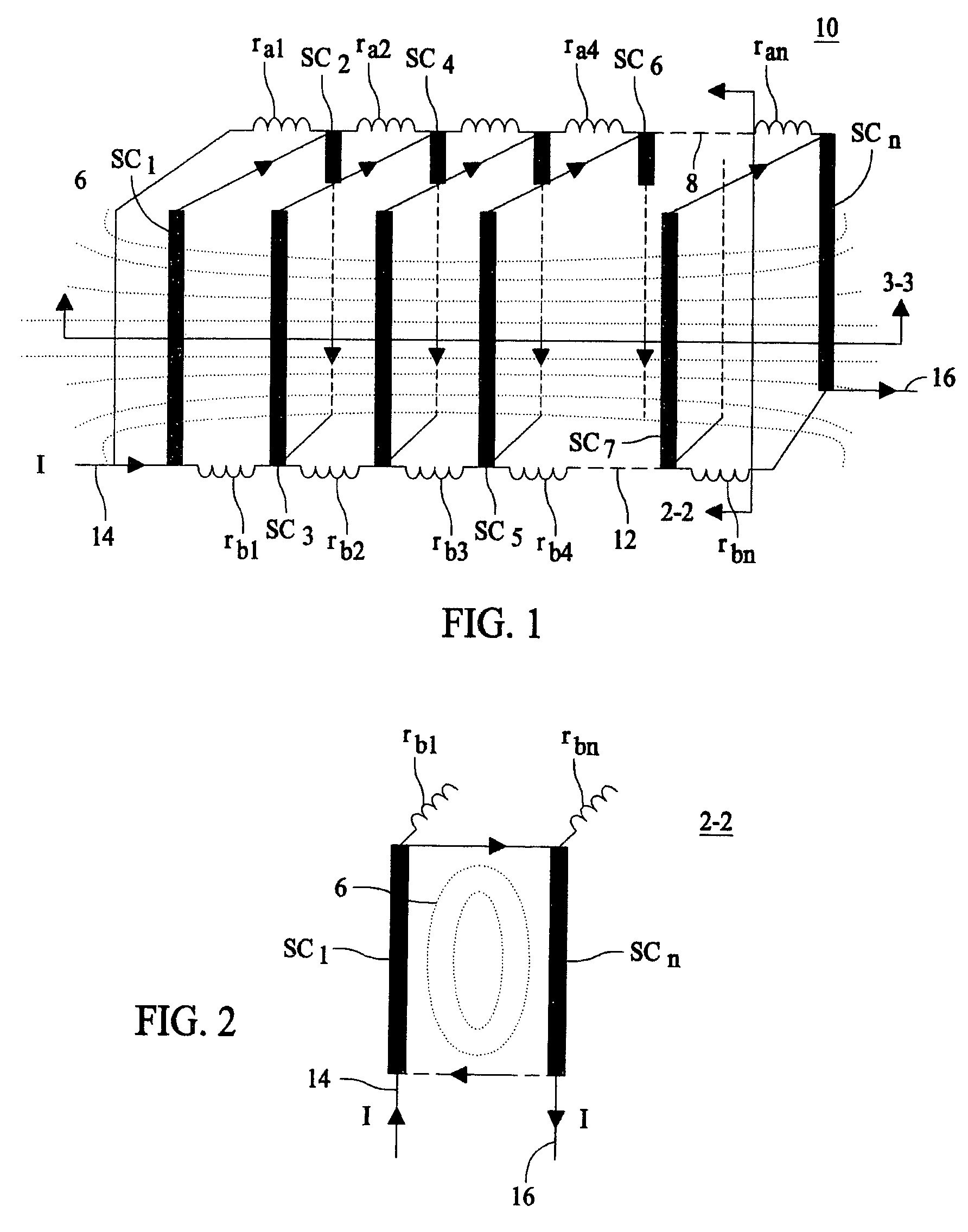Self field triggered superconducting fault current limiter
a fault current limiter and self-triggered technology, applied in superconducting magnets/coils, emergency protective arrangements for limiting excess voltage/current, magnetic bodies, etc., can solve the problems of sharp surge in current, catastrophic damage to grid equipment and customer loads connected to the system, and add to the complexity of the device, improving the reliability of the device
- Summary
- Abstract
- Description
- Claims
- Application Information
AI Technical Summary
Benefits of technology
Problems solved by technology
Method used
Image
Examples
Embodiment Construction
[0031]This invention provides an approach to generate the magnetic field from the HTS elements themselves. This invention also employs shunt coils to protect HTS elements from uncontrolled energy input during fault limiting conditions. The shunt coils also help to reduce the effect of statistical variations of HTS elements.
[0032]U.S. Pat. No. 6,809,910, entitled “Method and Apparatus To Trigger Superconductors In Current Limiting Devices”, issued on Oct. 26, 2004, assigned to the assignee of the present invention, is herein incorporated by reference in its entirety. This patent describes a FCL having a shunt and a trigger coil and provides details about the trigger coils and the triggering method and mechanism.
[0033]The superconducting fault current limiter (SCFCL) array uses a magnetic field generated by the superconductor elements for self triggering. This approach eliminates the need for external magnetic field generating coils or windings and makes the design of SCFCL less compl...
PUM
 Login to View More
Login to View More Abstract
Description
Claims
Application Information
 Login to View More
Login to View More - R&D
- Intellectual Property
- Life Sciences
- Materials
- Tech Scout
- Unparalleled Data Quality
- Higher Quality Content
- 60% Fewer Hallucinations
Browse by: Latest US Patents, China's latest patents, Technical Efficacy Thesaurus, Application Domain, Technology Topic, Popular Technical Reports.
© 2025 PatSnap. All rights reserved.Legal|Privacy policy|Modern Slavery Act Transparency Statement|Sitemap|About US| Contact US: help@patsnap.com



